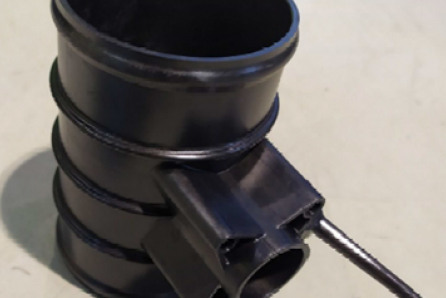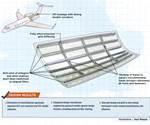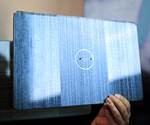ECOFUNEL program develops thermoplastic compound with increased electrical conductivity
Fiber-reinforced thermoplastic shows eight times more electrical conductivity as compared to the reference material with only a 20% decrease in mechanical properties.

Environmental control system (ECS) prototype part using ECOFUNEL thermoplastic compound. Photo Credit: Clean Sky 2
Clean Sky 2 has announced that its ECOFUNEL project successfully developed a new kind of thermoplastic that is said to work just as well as current state-of-the-art materials, and also delivered several real-scale environmental control system (ECS) prototypes parts for aircraft application using this new material.
The consortium notes that transitioning metal parts to composite materials within the ECS has two main benefits: reducing weight and negating the need for harmful chromium surface treatments. Chromium is both toxic to the environment and carcinogenic, so reducing the use of this element will also bring health benefits for workers.
The resulting fiber-reinforced thermoplastic formulation retains enhanced electrical conductivity that can be employed in ECS without the need for electric braids to assure electrical continuity. It reportedly showed eight times more electrical conductivity as compared to the reference material, with only a 20% decrease in mechanical properties. At this stage mass savings offered by this material are estimated to be in the range of 40-50% compared to metallic baseline designs, and finer estimates will be carried out in 2021.
Further applications of the technology will be determined between March-April 2021, when the project outcomes will be presented to Liebherr Aerospace’s (Bavaria, Germany) scientific and product community. As a spin-off result, ECOFUNEL also found an interesting electrical enhancement effect of certain heat treatments on the thermoplastic formulations.
The ECOFUNEL project involved the Automotive Technology Centre of Galicia (CTAG, Spain), ADERA (Association pour le Developpement de l’Enseignement et des Recherches auprès des universités, des centres de recherche et des enterprises d’Aquitaine), the Foundation for the Research, Development and Application of Composite Materials (FIDAMC), and Liebherr Aerospace. The budget was €500,000.
Related Content
-
Developing repairs for thermoplastic composite aerostructures
HyPatchRepair project proves feasibility of automated process chain for welded thermoplastic composite patch repairs.
-
Composites manufacturing for general aviation aircraft
General aviation, certified and experimental, has increasingly embraced composites over the decades, a path further driven by leveraged innovation in materials and processes and the evolving AAM market.
-
Welding is not bonding
Discussion of the issues in our understanding of thermoplastic composite welded structures and certification of the latest materials and welding technologies for future airframes.
















